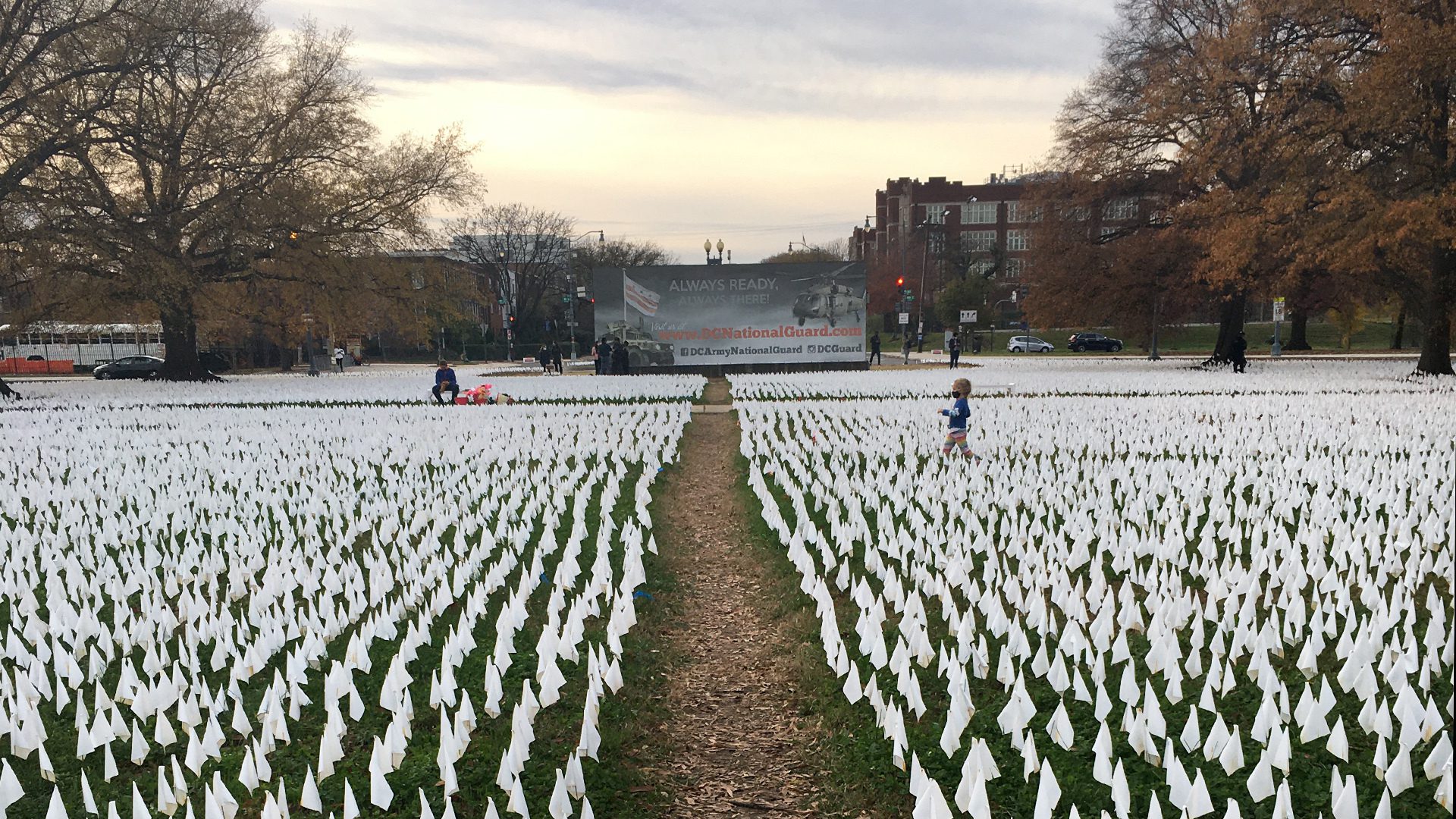- March 02, 2021
- By Liam Farrell
It was one of the starkest visualizations of the toll that COVID-19 had taken on Americans: a field of hundreds of thousands of bright white flags just outside the heart of the nation’s capital, each one standing for a life ended by the ongoing pandemic.
And while artist Suzanne Brennan Firstenberg’s installation “In America: How Could This Happen …” has been removed from four acres near RFK Stadium in November, a University of Maryland professor contributed to the efforts to give it an ongoing digital home that officially launched yesterday.
“She wanted some way of preserving this and possibly replicating it later, and extending this opportunity for grieving,” said Adam Fracchia, assistant research professor in the Department of Anthropology. “A lot of people said this is the only way they could express grief for loved ones because they couldn’t attend funerals or get together with loved ones.”
Fracchia was brought in to assist in digitizing the project by Sarah Wagner, an associate professor of anthropology at George Washington University who he knew from a Department of Defense program that works to recover the remains of missing soldiers. Wagner had come across Firstenberg’s art while studying how COVID-19 has affected grieving rituals and wanted to help preserve it.
“Over and over in our research, we've heard from families, clergy, funeral directors and hospice workers that COVID-19 has robbed people of not only their loved one but also the ability to mourn together and draw support from one another,” Wagner said. "Suzanne’s installation utterly overpowered me when I first stepped onto the field—it was one of the few spaces that insisted we acknowledge the scale of loss by recognizing each life.”
Firstenberg, who is based in Bethesda and has also spent decades as a hospice volunteer, began installing more than 200,000 flags on Oct. 19, and had to add an additional 50,000 as deaths mounted over the six weeks of the exhibition. The thousands who visited, including U.S. House Speaker Nancy Pelosi and D.C. Mayor Muriel Bowser, were encouraged to plant their own flags and write remembrances on them.
Before the installation was taken down, Fracchia led a group of GW faculty and students, and volunteers to walk the flags and record the location and names for each that had a personal dedication left by visitors.
Maps of 44 sections and 1,865 dedicated flags were then turned over to Maggie Peterson, an archaeologist and graduate student in geographical information systems at GW, who created a digital and searchable map now online. Users can click on each individual flag to see the name of who it is for as well as any message left behind: “Our world is not the same without you. We love you and miss you so much,” “Father of 4,” “Love You Sis!” Virtual visitors can also request a flag be added.
“While the physical exhibition has ended, the deaths from COVID-19 continue,” Firstenberg said. “We hope this digitized version of the art will provide national acknowledgement and comfort for everyone who has lost loved ones.”
Fracchia said the process of cataloguing the flags was a way for him to connect as well to the victims of the novel coronavirus, with the numbers of deceased now surpassing the half-million mark in the United States.
“It’s humanizing to touch a flag, mapping and giving it a number,” he said. “There’s somebody’s name on that flag and we have the chance to contribute to a memorialization of his or her life.”
George Washington University’s Office of Media Relations contributed to this article.
Topics
Arts & Culture